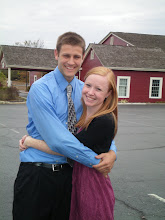I recently watched “The Shakers”, a film by Tom Davenport and Frank Decola suggested by www.folkstreams.net. In this documentary, Shaker women were interviewed and told about their lives and experiences in the Shaker community, and also the history of the Shaker religion. One fact that stuck out to me was their belief in celibacy. The Shaker community started out with 6,000 members about 100 years ago, but in 1974 when this film was produced, only 14 sisters remained. Towards the end of the video, these women also explained that in some places, they have closed the option for new members because they fear that these new members are only seeking to inherit the Shakers’ assets and not truly follow all of the Shakers’ beliefs. This struck my interest because I find celibacy very puzzling; how is one to procreate? I expect the entire Shaker community and religion is about to cease especially because of the new decree to not admit new members and their inability to have children. This idea puzzles me because my notion is that most religions want to procreate and initiate new members in order to keep their spiritual beliefs alive and thriving. I wonder what the Shakers’ thoughts would be if everyone on earth conformed to the Shaker beliefs. Would they agree on the death of reproduction and therefore the halt of all population growth on earth? It is an interesting topic to think about, but unfortunately there are not too many Shakers left on earth to ask these questions. I found the dedication of these Shaker women both eerie and inspiring. It seemed that they had no ideas or interpretations of their own, but simply were copycats of their original leaders. I find all of this skeptical because I think spirituality should derive from personal growth and not because of a childhood promise made by one of the women interviewed in this documentary. But their devotion to their faith and set beliefs, I find inspiring and I strive to be that dedicated to my own spirituality.
Overall, this film was very informative and interesting, but also depressing because of the realization that the Shaker community will cease to exist in a very short time.
This post is a response to the Extra-Credit Film Review assignment.
